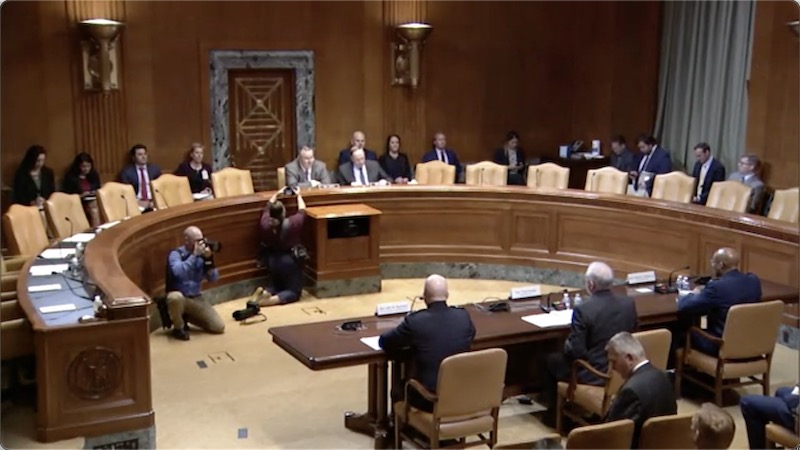导读:针对财年2023预算问题,美国参议院召开了听证会,美国空军部长、空军参谋长、太空部队参谋长三人做了发言,并接受了议员的询问。本文选择美国太空部队在一体化威慑中的地位和价值,供读者参考和讨论。

一体化威慑始于空间。太空部队为联合部队以及我们的盟友和合作伙伴提供对一体化威慑和有效防御至关重要的关键服务。导弹预警、定位、导航和授时、通信和空间情报等独特服务使美国成为重要的安全伙伴。长期以来,威慑依赖于可靠的导弹预警以及在任何情况下与战略部队进行沟通的能力。太空部队今天在这些任务中提供了无与伦比的能力,并正在开发下一代能力以满足未来的任务要求。
下一代架空持续红外提供关键的战术和战略弹道导弹预警,并充当从传统检测和预警到应对现代机动威胁所需的更强大导弹跟踪的桥梁。向弹性、扩散架构的过渡将扩展到其他任务领域,包括战场空间意识和天基情报。除了我们提供预警和跟踪现代威胁的能力之外,演进的战略卫星通信系统将确保即使受到攻击也能指挥和控制战略力量。
太空在军事行动中提供了不对称的优势。如果没有获得和保持太空优势的能力,联合和联合部队就无法在与有太空能力的对手的冲突中取得成功。潜在的对手正在积极开发和部署旨在拒绝在冲突中使用太空的系统。通过否认在太空突然发动决定性攻击的可能性,太空部队加强了所有领域的一体化威慑。从2023财年开始,太空部队向弹性架构的转型旨在阻止对手通过攻击一些脆弱的高价值太空资产获得优势。这种新的设计方法通过在多个轨道上扩散的分布式系统来增强能力和弹性。总而言之,这些功能显着提高了对各种高级威胁的威慑力。
经历这种转变的第一个任务领域是导弹警告/导弹跟踪架构。2023财年对这一转型的投资实施了由太空作战分析中心(SWAC)开发的部队设计。在多机构合作的支持下,太空部队正在建立架空持续红外企业架构战略,以提供可以受到保护、经受住攻击、在攻击下优雅降级和快速重组的架构功能。与我们的盟友和合作伙伴网络一起,向弹性架构的转变向世界传达了我们在太空和陆地上的联合作战可信部队将继续在所有领域和冲突阶段保持作战优势。
太空领域意识(SDA)对于归因太空中的不良行为以及跟踪轨道上的物体、全球发射尝试和主动有效载荷交付,以及在冲突期间控制太空资产(如有必要)至关重要。2023财年的投资,例如深空先进雷达能力,将为深空目标跟踪提供持续的全天候雷达能力。此外,深空先进雷达能力将增强太空部队从发射到最终目的地跟踪外国发射的能力,并提高观察现有和新兴威胁行为的能力。除了支持将太空交通管理任务移交给商务部外,太空部队越来越多地使用由盟国和商业公司提供的SDA数据,以提高对该领域的认识并将重要数据分发给联合部队、跨部门、盟友和伙伴。通过对太空中潜在对手的行为进行持续评估,太空部队为一体化威慑概念下的一系列可用措施做出了贡献。
在从和平到不受约束的常规甚至核战争可能过渡的任何阶段,太空都可能成为冲突区。一体化威慑涵盖了这一范围。太空部队正在转变为一套能够在整个范围内威慑的能力,帮助确保我们的盟友和合作伙伴的安全和支持,并在必要时过渡到战时行动。2023财年预算开始了这一转变。
英文原文:
Integrated deterrence starts with space. The Space Force provides the joint force and our allies and partners critical services that are essential to integrated deterrence and effective defense. Unique services such as missile warning, positioning, navigation and timing, communications, and space-enabled intelligence, make the United States a valued security partner. Deterrence has long depended on assured missile warning and the ability to communicate with strategic forces in all circumstances. The Space Force delivers unmatched capability in these missions today and is developing the next generation of capabilities to meet mission requirements in the future.
Next Generation Overhead Persistent Infrared provides critical tactical and strategic ballistic missile warning and acts as a bridge from legacy detection and warning to the more robust missile tracking needed to counter modern, maneuverable threats. The transition towards resilient, proliferated architectures will extend to other mission areas, including battlespace awareness and space-based intelligence. In addition to our ability to provide warning and tracking of modern threats, the Evolved Strategic Satellite Communication system will ensure the ability to command and control strategic forces despite attack.
Space provides an asymmetric advantage in military operations. The joint and combined force cannot succeed in conflict against a space-capable adversary without the ability to gain and maintain space superiority. Potential adversaries are actively developing and fielding systems intended to deny the use of space in conflict. By denying the potential for a sudden decisive attack in space, the Space Force bolsters integrated deterrence across all domains. Beginning in Fiscal Year 2023, the Space Force’s transformation to resilient architectures is purpose-built to deny an adversary’s ability to acquire an advantage through an attack on a few fragile, high-value space assets. This new design approach enhances capability and resiliency through distributed systems proliferated across multiple orbits. Taken together, these features measurably increase deterrence of the full spectrum of advanced threats.
The first mission area to undergo this transformation is the Missile Warning/Missile Tracking architecture. The Fiscal Year 2023 investment in this transformation implements a force design developed by the Space Warfighting Analysis Center (SWAC). Supported by a multi-agency collaboration, the Space Force is building upon the Overhead Persistent Infrared Enterprise Architecture Strategy to deliver architecture capabilities that can be protected, survive attack, degrade gracefully under attack, and be rapidly reconstituted. In conjunction with our network of allies and partners, the transformation to resilient architectures communicates to the world that our joint combat credible forces, in space and terrestrially, will continue to sustain operational advantages through all domains and phases of conflict.
Space Domain Awareness (SDA) is essential to attributing bad behavior in space as well as tracking objects in orbit, launch attempts worldwide, and active payload deliveries, and, if necessary, controlling space assets during a conflict. Fiscal Year 2023 investments, such as the Deep Space Advanced Radar Capability, will deliver continuous, all-weather radar capabilities for deep-space object tracking. Additionally, Deep Space Advanced Radar Capability will enhance the Space Force’s ability to track foreign launches, from liftoff to final destination, and improve the ability to observe the behavior of existing and emerging threats. In addition to supporting the transfer of the space traffic management mission to the Department of Commerce, the Space Force increasingly uses SDA data, provided by allies and commercial companies, to improve awareness of the domain and distribute vital data to the joint force, interagency, allies and partners. By providing continuous assessments of potential adversary behaviors in space, the Space Force contributes to the range of measures available under the integrated deterrence concept.
Space can become a conflict zone at any stage of the possible transition from peace to unconstrained conventional or even nuclear warfare. Integrated deterrence spans this spectrum. The Space Force is in the process of transforming to a suite of capabilities that can deter across that spectrum, help to assure the security and support of our allies and partners, and, if necessary, transition to wartime operations. The Fiscal Year 2023 budget begins that transformation.

评论